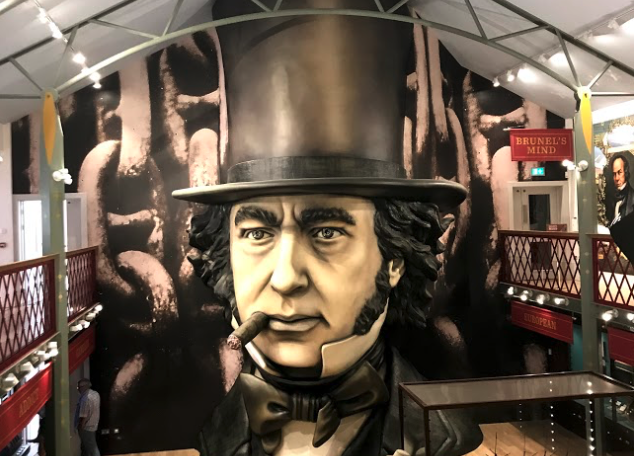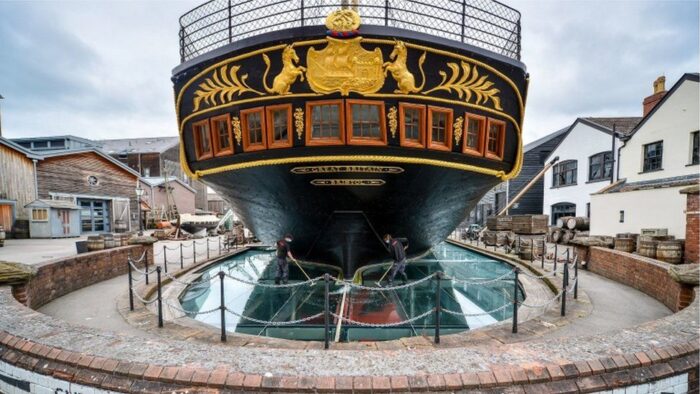- What We Do
- Understanding your audience
- Engaging new audiences
- Designing experiences
- Building loyalty
 Case studies
Case studiesSS Great Britain's visitor experience
Case study: How Culture Segments was used in the award-winning Being Brunel attraction to design a single visitor experience that feels bespoke to each target segment.
SS Great Britain Trust needed their new attraction, Being Brunel, to reach a large, diverse audience. Using Culture Segments, they successfully created a single cohesive visitor experience that uses ingenious ideas and subtle techniques to make each target segment feel the experience is designed just for them.

Introduction
Isambard Kingdom Brunel’s SS Great Britain is one of the most important historic ships in the world. When launched in 1843, she was called ‘[T]he greatest experiment since the Creation’. She is now a major visitor attraction in Bristol, England.
SS Great Britain Trust, the organisation behind the attraction, is also ideas-driven. The team is constantly looking to grow, evolve and experiment with its offer to better serve audiences, reach more people and tell more important stories.
“We want to know Brunel the person, and have a shared experience.”
An Expression visitor
Visitor experiences designed with psychographics
When SS Great Britain was awarded a Heritage Lottery Fund application for a new museum space, Being Brunel, MHM’s had provided the supporting evidence for the funding application.
Now the team was making Being Brunel a reality. They wanted to reach a large, diverse audience, and they needed a framework to deliver the subtly different outcomes our research had shown visitors would be looking for.
The SS Great Britain team used MHM’s Culture Segments to create a single cohesive visitor experience, with subtle ideas and techniques woven in that would resonate with specific target segments.
In testing, a focus on Brunel ‘the man’ worked for all priority segments. The detailed visitor journey: how the space was designed, interpretation, navigation, storytelling, content and interactives were then all considered through a Culture Segment lens. For example:
Affirmation said: “We want real experiences, and to create memories.”
SS Great Britain responded by enabling audiences to slowly ‘become’ Brunel and providing mementos of the visit.
Expression said: “We want to know Brunel the person, and have a shared experience.”
SS Great Britain responded by starting the experience with digital portraits of his family to explain his early life, and making interactives a shared experience.
Enrichment said: “Don’t mess about with his work, just help us learn.”
SS Great Britain responded by displaying authentic objects and avoiding overly gimmicky interactives.
Essence said: “We want to get deep inside his head, and to find our own path.”
SS Great Britain responded by creating Brunel’s ‘brain’ so that audiences could see how his mind worked, and leaving most of the exhibition an open space to explore freely.
Stimulation said: “We want to be surprised, and to learn secrets!”
SS Great Britain responded by creating a huge ‘wow moment’ as visitors left the first room and entered the main space; nuggets of personal information were secreted throughout.
Evaluating the psychographic approach
SS Great Britain’s ‘Being Brunel’ opened in 2018. The first 10 weeks of opening saw visitor figures 30% higher than the previous year.
In 2019 the team invited MHM back to assess whether Being Brunel was delivering the richer, deeper visitor experience people had said they wanted.
Our evaluation found the psychographic approach worked just as intended.
As well as enjoying the chance to go deeper into Brunel’s world, audiences in each Culture Segment picked up on and responded well to the details created just for them – and as a result had a more meaningful visit and powerful outcomes.
Of course, there is always room to learn. The participants gave valuable feedback on which details to iron out or amplify to optimise the experience for each segment’s needs.
But, as you might expect, the SS Great Britain team already has plenty of new ideas for how they might use the feedback to create an even more satisfying visitor experience in future.
- Engaging new audiences
- Understanding your audience
